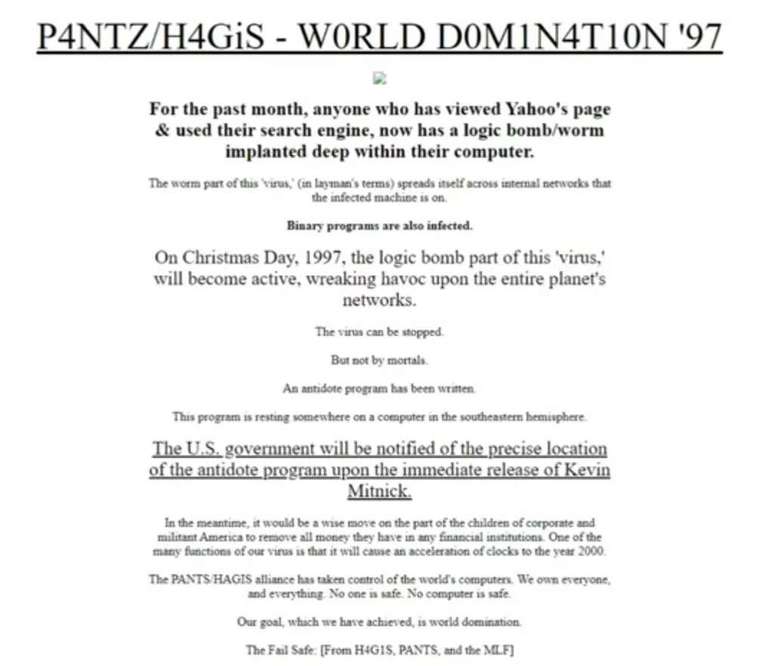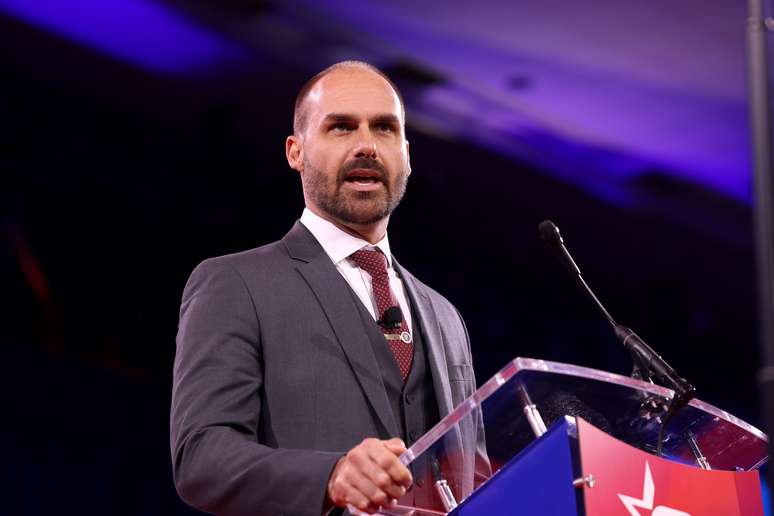One of the first cybercriminals to gain notoriety, Kevin Mitnick was arrested in 1995 and later became a computer security consultant.
Kevin Mitnick, once known as the world’s most wanted cybercriminal and has become one of the best-known consultants in the digital security, passed away on July 16, 2023 from complications of pancreatic cancer, which he had been dealing with since last year. The death marks the passing of one of the most prolific figures of technology’s early years, a time when so-called “hackers” were a cinematic fantasy.
- Meet the 10 most famous hackers in the history of the Internet
- History of Cybersecurity: The Origin of Cybercrime
For Mitnick, however, it was real, so much so that his story has motivated films and documentaries. What’s more, he ended up in the headlines after a hunt conducted by the FBI, which placed him on the lists of most wanted criminals until his capture in 1995. Among his crimes were the theft of data, paper information credit and confidential information data from carriers, government agencies and universities.
His story, however, begins simpler, when he bypassed the bus system of the American city of Los Angeles, running free for months with the use of a hole puncher and transfer tickets he found in the garbage of one of the companies transport services serving the city. His interest in computers, however, came later, when at the age of 16 he invaded the computer systems of DEC (Digital Equipment Corporation), one of the pioneers of the US computer market.
The attack occurred over the telephone in 1979, while copying proprietary software earned him a year in prison, plus three years of probation. It was only the beginning of a criminal record that, towards the end of that period, began to be filled with other crimes when Mitnick broke into the computers that served the voice mail platform of Pacific Bell, one of the largest telephone operators in the United States.
grab me if you can
Here begins the story that will transform the radio amateur and university student, who worked at the reception desk of a Jewish congregation, into one of the mythical figures of global technology. Wanted for justice, Mitnick would spend two and a half years on the run continuing to commit crimes using cloned cell phones and evasion tactics available in the early days of the internet.
While companies and, above all, the authorities, still tried to understand what the network was, cybercriminals, until then, invaded private systems and stole trade secrets. According to reports from the newspaper The New York Times citing then Assistant U.S. Attorney General Kent Walker, Mitnick was given access to information, relatives and property worth millions of dollars. “A major threat,” they called it at the time.
After offering rewards and an apotheotic strip search, Mitnick was arrested in February 1995. He was across the country, found in an apartment in the US city of Raleigh, but far from the expected high profile at the time. he is still imagined today when it comes to cybercriminals. He didn’t have money, weapons or drugs, but hundreds of cloned cell phones, many computers and fake IDs.

His police file, however, told a different story. He had 14 counts of financial fraud and eight related to possession of proprietary devices or materials. He has also been charged with crimes such as wiretapping of electronic communications, unauthorized access to government computers and damaging computers. Crimes related to computer crimeat the time, they weren’t typed, and the term barely existed in the mid-1990s.
Throughout his life, Mitnick denied many of the allegations made against him, particularly that he was a dangerous individual or indications of intellectual property theft. Finally, in 1999, he pleaded guilty to some of his crimes and was sentenced to three years and 10 months in prison for the computer crimes, plus another year and 10 months for breaking his supervised release agreement, all the while. early 80s.
the myth is born
Before the conviction, however, Mitnick’s figure became increasingly well known. In 1997, the websites of the Yahoo! and the newspaper The New York Times they were invaded and defaced with a message of support for him, while “Free Kevin” stickers began to proliferate on lampposts in major cities.
Fairy tales related to the ancient vision of a cybercriminal have also proliferated. In a message displayed on Yahoo! defaced, those responsible claimed that all visitors had been infected with a virus that would have destroyed their computers on Christmas Eve if Mitnick was not released by that date. The malware, of course, did not exist and the accused himself denied any involvement in the action, which almost brought him new legal problems.

“In the past month, everyone who has viewed the Yahoo! home page or used the search engine has had a logic bomb/worm planted in their computer. The worm is part of a ‘virus’ (in simply put) that spreads through Internal Networks that the infected machine is in. The binaries have also been infected.
On Christmas Day 1997, the logic bomb of this “virus” will be activated, wreaking havoc on networks across the planet. The virus can be prevented. But not by mortals. An antidote program has been written. The program is on a computer in the Southern Hemisphere. The US government will be notified of the exact location provided it releases Kevin Mitnick immediately.
Meanwhile, it would be wise for American corporate and military children to remove all the money they have in any financial institution. One of the many functions of our virus is to speed up clocks to the year 2000.
The PANTS/HAGIS alliance has conquered the computers of the world. We have everything and everyone. Nobody is sure. No computers. Our goal, if achieved, is world domination.”
During his five-year prison term, the hacker spent eight months in solitary confinement. In later interviews, he accused the judiciary and the press of creating an image of him as a dangerous criminal, someone “capable of unleashing a nuclear war if he had access to a telephone.” Meanwhile, supporters and activists debated whether the penalties imposed on him were exaggerated, given the idea that the crimes committed did not generate financial losses, while the only crime actually described in the legislation was copying copyrighted software.
Such conversations, by the way, generated impacts that we see to this day in news coverage of cybersecurity and, also, in American legislation. The Mitnick case was the first and, to date, one of the most famous to bring the issue to the fore, leading to the creation of legislation on computer crimes, as well as serving as an alert to the population on the risks involved with their data and devices in an increasingly technological society.
The concept of social engineering
Mitnick was released in January 2000 and remained on probation until 2003. He was not allowed to use any technology other than a landline phone during the period, nor could he profit from movies and books about his history. It was during this time that he “switched sides” and became a security consultant, beginning to lecture and write books on the subject.
His main contribution to the debate has been the dissemination of the idea of social engineering., a concept where, given some information about someone or a system, much more could be achieved. Think of the contemporary concept of a financial fraudster who, in possession of the full name and CPF of a bank customer, convinces him to provide his credit card details by telephone.
That’s right, today a common theme that is mentioned every day in the news, but at the time almost a magical passage. Between publications, authorized biographies and conferences, the specialist opened Mitnick Security Consulting, a consulting firm that developed KnowBe4, or “know first, in English”, a cybersecurity training and testing platform that exists to this day and is leader in phishing awareness.
He was also on the advisory board of Zimperium, which develops security systems for smartphones and other mobile devices. Between travels around the United States and around the world, including visits to Brazil until last year, he has never left his hometown of Los Angeles, where he died on July 16, 2023, at the age of 59. He leaves behind his wife, Kimberley Mitnick, who is pregnant with their first child.
His story was also made into a movie in 2000. Virtual Hunt: Operation Takedown is based on the book written by Tsutomu Shimomura, a security specialist who teamed up with the FBI to catch the hacker. In the film, Skeet Ulrich (Scream) plays Mitnick, leading a cast that also includes Russell Wong (Westworld) and Tom Berenger (The Shooter), directed by Joe Chappelle (Black Bird).
Source: with information from New York Times
Trending on Canaltech:
- Barbie │ What are the cinematic combos for the film in Brazil
- Aquaman 2 │ As the last DCEU film has already become a headache for Warner
- Samsung launches Padado Galaxy in Brazil to block lost or stolen cell phones
- Covid-19: genetic variation explains asymptomatic cases of the disease
- Oppenheimer | Compare the cast of the movie to real people
- Galaxy Watch gets support for WhatsApp, Samsung Wallet and Thermo Check
Source: Terra
Rose James is a Gossipify movie and series reviewer known for her in-depth analysis and unique perspective on the latest releases. With a background in film studies, she provides engaging and informative reviews, and keeps readers up to date with industry trends and emerging talents.


![Everything for the light: Victoria’s lost brother is re -emerging … which is waiting for you for a week from July 21, 2025 to 25 to 25 [SPOILERS] Everything for the light: Victoria’s lost brother is re -emerging … which is waiting for you for a week from July 21, 2025 to 25 to 25 [SPOILERS]](https://fr.web.img4.acsta.net/img/47/f5/47f509b19ed6436b5de2bbbeef730efe.png)



-1hbirn1uu8ugo.jpg)
